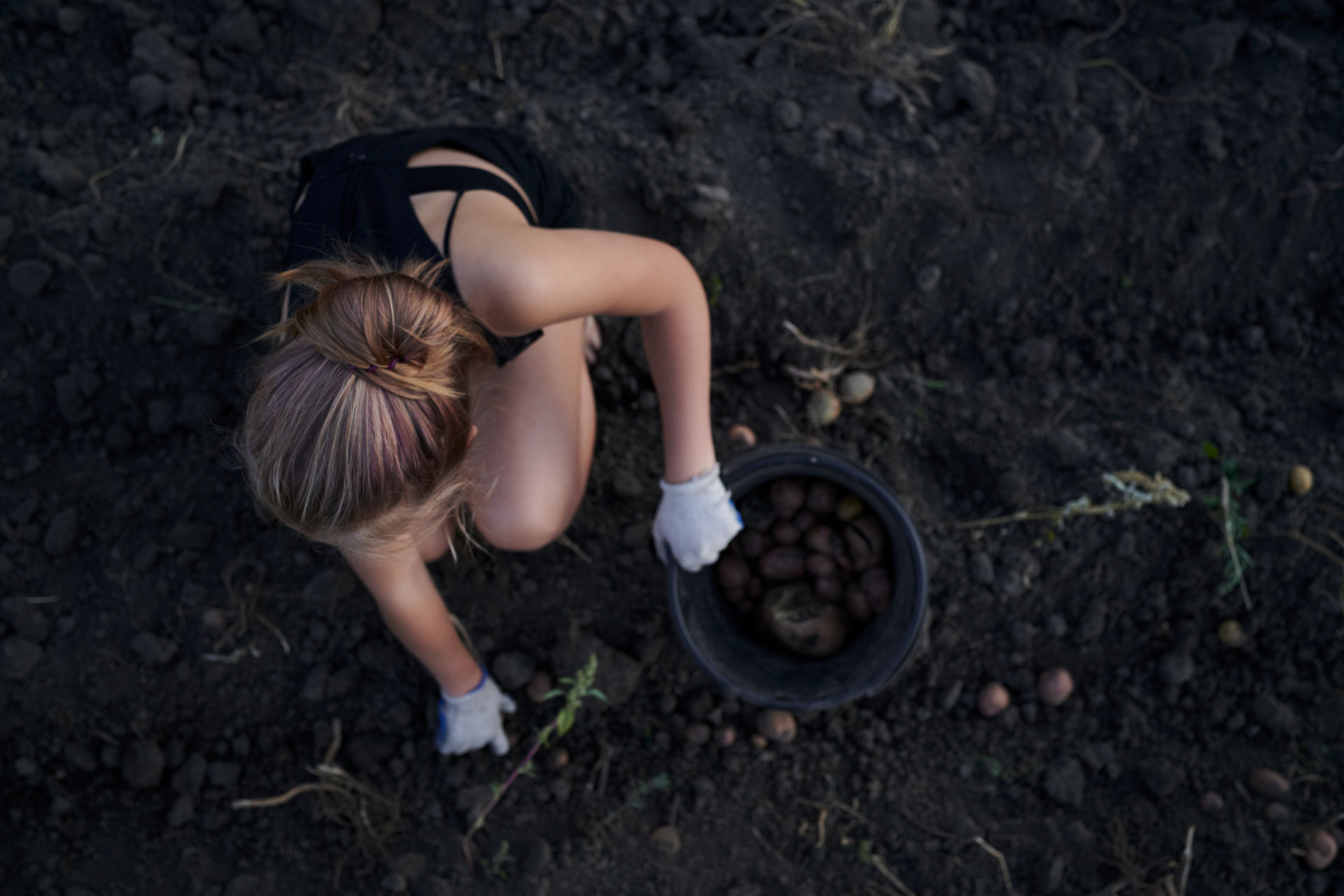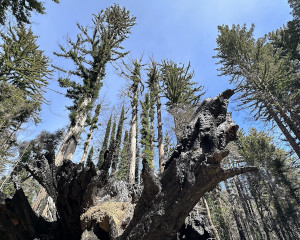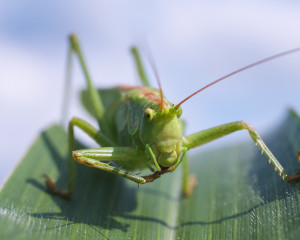
Seeing Ourselves in the Soil
By Jake Eshelman
Sign up for our monthly newsletter!
The soil remembers you. Some people might be unsettled by the idea that soil is sentient. It may also be a haunting thought depending on your relationship with mortality. Personally, I find it all rather comforting. After all, soil has a long track record of supporting our health—and indeed life in general.
We wouldn’t be here without soil. It produces 98.8% of the food we eat.1 It maintains the oxygen cycle so we can breathe. It cultivates the plants we turn to for clothing and shelter. It cleans our water and helps regulate flooding.2 It pulls carbon out of the atmosphere and stores it underground where it supports plant growth.3 It hosts around 25% of our planet’s biodiversity, which in turn supports more resilient ecologies.4 It archives important information from the past, from cultural artifacts to climatic data, that enrich how we understand ourselves, the environment, and our interwoven history. In these and other ways, soil directly impacts our everyday health and wellbeing. When soil thrives, we can too. And when the soil suffers, so do we.
Soil, ourselves.
Many discussions regarding human health seem to unfold in a vacuum, where our individual and collective wellbeing is somehow independent from the living, breathing, teeming earth directly beneath our feet. The reality however is that humans and soil are inextricably intertwined.
This is far from a new idea. Taking an example from my own linguistic heritage, it’s clear that humanity’s connection to the soil is baked into my experience of the world. Following etymological breadcrumbs back in time, the word ‘human’ shares the same root as ‘humus’—a revelation that reveals a deeply-rooted understanding that we are—and are of—the soil.5 This of course isn’t unique to English. Other languages, such as Hebrew, even add a spiritual dimension to the generative, existential reciprocity between humans and soil, particularly through the term Adam (or man), which shares its roots with the words for “ground” and “earth”.6
The connection between human health and soil also unfolds on a biological level. In his research exploring the link between agriculture, ecology, and human health, Travis Cox notes that “the microbial ecology of the human gut is directly informed by, and in a way mirrors, soil microbial ecology”.7 Indeed, our bodies exchange microorganisms and nutrients with soil. In this way, humans and soil form a permeable Venn diagram—simultaneously sharing and infiltrating and influencing one another. Naturally, how we nourish ourselves has an incredible impact on this relationship.
Suicide by soil depletion
Food represents one of the most intimate ways we all interact with the soil, even at a distance. Despite our collective dependence on farms, many people are profoundly disconnected to where our food comes from, how it was cultivated, and the broader impact it has on our environment. I say this without judgement, as it’s not always easy to be a conscious consumer, especially when it comes to navigating something as intricate and complex as agriculture. However, the dissociation created by an increasingly intricate, sprawling, and depersonalized food system enables—and even encourages—farming practices that adversely impact the soil and, by extension, our collective wellbeing.
At our current rate, farms risk running out of viable topsoil entirely. In the Midwest alone, more than 57.6 billion metric tons of soil have eroded since farmers first began tilling the land just 160 years ago.8 Globally, The International Soil Reference and Information Center (ISRIC) cites that around 17% of all land “has already been strongly degraded and the affected area is still growing”.9 Looking into the not-too-distant future, virtually all global ecosystems and populations will be directly impacted by soil degradation, which is projected to affect 90% of the world’s soil by 2050.10 Odds are, that you may even be experiencing some of these impacts already without necessarily realizing it.
Erthe toc of erthe erthe wyth who
Earth took from the earth earth with woe
In his discussion of this salient 14th century lyric bemoaning the human exploitation of the environment, Jeffrey Jerome Cohen notes that “erthe” embodies multiple meanings at once, including: “person, living body, corpse, soil, minerals, planet, world, possessions, and grave”.11 As such, the message is clear: environmental exploitation is also self-mutilation.
Ironically, many of the agricultural advancements developed during the 20th century to support a steadily growing global population ended up putting us and our soil in a precarious position. The rise of industrial scale technologies in farming led to the proliferation of monocropping, which is, by definition, at direct odds with the biodiversity needed to support healthy soil and thriving ecosystems. As a direct result of biodiversity loss, monoculture crops are extremely vulnerable to pests who enjoy ready and uninhibited access to their favorite plants. Rather than addressing the agroecological issues at hand, big agribusiness instead doubled down to develop an ever-expanding variety of ‘crop protection solutions’. For a while at least, it seemed to work. During the so-called “Green Revolution” in the mid 20th century, the intensified and largely indiscriminate use of chemical pesticides, crop tillage, and synthetic fertilizers dramatically increased global crop yields, but these innovations also triggered a sudden and staggering decline of soil health worldwide.12
The industrial approach to agriculture has created a positive feedback loop that requires ever-increasing amounts of synthetic fertilizer—and at a considerable cost. Whenever we harvest a plant, we pluck its nutrients from the soil, leaving a deficit that needs to be replenished. Left to its own devices and wisdom, soil regenerates itself. However, it can take up to 1,000 years for soil to accumulate enough organic matter and microbial activity to replenish one inch worth of topsoil.13 Natural fertilizers such as manure help to accelerate and enrich this process, but maintaining soil health requires both a balance and patience that hasn’t historically suited agribusiness. Instead, industrial agriculture companies have created a global industry of synthetic fertilizers, which are chemically manufactured solutions containing varying amounts of nitrogen, phosphorous, and/or potassium necessary for plant growth. With intensive use, these highly concentrated blends create chemical-dependent farming systems that undermine the soil’s natural ability to support crops.
It can take up to 1,000 years to accumulate enough organic matter and microbial activity to regenerate one inch worth of topsoil.
Starving with full bellies
In sharing his research surrounding synthetic fertilizers, USDA Researcher Rich Haney draws a telling analogy between plant and human health: chemical-dependent farming is akin to raising children purely on vitamins rather than feeding them a balanced meal.14 This clearly isn’t feasible, let alone desirable. Isolated chemicals can only support plant growth to a point because it doesn’t provide the soil with everything it needs to flourish. Instead, synthetic fertilizers—and the agronomic practices they enable—decrease the nutrient density in the soil. This translates into a decreased nutrient density in our food.
A recent study found that crops and livestock produced using conventional farming practices (i.e., synthetic fertilizers) contain fewer nutrients compared to those cultivated through regenerative, soil-conscious farming practices.15 That means today, we would have to eat more conventionally grown food to access the same amount of nutrients we could find in those produced prior to the use of synthetic fertilizers. As a result, conventional farmers are pressured to cultivate even more biomass to nourish a growing global population. Unfortunately, this often translates into heightened use of synthetic fertilizers and even the cultivation of more land, which itself is a precious, finite resource. However, when farmers choose to implement practices that enrich soil health, the positive impacts reverberate well beyond the farm.
Many of the agricultural advancements developed during the 20th century to support a steadily growing global population ended up putting us and our soil in a precarious position.
Influencing climate change from the ground up
In addition to nourishing our bodies, soil also supports climate health and, by extension, (y)our ability to continue living on this planet. Much of this impact stems directly from our food system.
Today, agriculture alone contributes 25% of the world’s greenhouse gas (GHG) emissions—and yet it’s also one of our best solutions to climate change.16 It all boils down to how farmers cultivate their crops. Mechanized tilling, for example, releases carbon into the atmosphere, both through disturbing the soil and by consuming fossil fuel to power heavy machinery.17 Naturally, these emissions lead to more extreme weather such as droughts, deluges, and other events further exacerbate soil erosion.18 This epitomizes some many of the ‘solutions’ developed by industrial agriculture companies that reinforce the problems they created in the first place. Such is the myopic, self-defeating spiral of sacrificing soil health in the name of corporate shareholders and operational efficiency.
Agriculture alone contributes 25% of the world’s greenhouse gas (GHG) emissions—and yet it’s also one of our best solutions to climate change.
At its best, agriculture is a resolutely generative process. This is especially the case when farmers adopt soil-centered growing methods. Practices such as cover crops or no-till empower the soil to pull carbon out of the atmosphere and store it in the earth where it benefits plant growth. That’s good for farmers, the environment, and everyone we share it with. Soil’s innate ability to sequester carbon also provides agriculture with the incredible potential to help reduce—and even reverse—global GHG emissions. In fact, scientists estimate that soil-based carbon sequestration initiatives can remove more than a billion additional tons of carbon from the atmosphere each year.19 This of course is essential in helping address the unfolding impacts of climate change that have a direct impact on our health, our homes, and our collective future.
We are reciprocal. Soil influences (y)our health in profound ways. Every day, farms around the world shift, evolve, and shape this mutual relationship—for better and worse. Agricultural practices that deplete the soil ultimately rob us, our environment, and future generations of the nutrients we all need. In this unfolding process of neglecting the foundational role soil plays in our everyday lives, we have collectively created conditions that jeopardize our wellbeing, especially through the increasingly more dramatic impacts of anthropogenic climate change. But, it doesn’t have to be this way. We can also learn from the soil to build a better future where we choose to heal; where we celebrate biodiversity; where we give back to the glorious cycle of life, death, and possibility. Our health is in our hands, as well as the soil. What we do to nurture this power is up to us.
Beyond his role as the Contributing Editor of Ecological Thinking at Plantings, Jake Eshelman is a photo-based artist and visual researcher exploring the complex relationships between people and other-than-human beings. Working to transcend the notion that humanity is somehow separate from—or superior to—the natural world. You can learn more about his work, writings, and publications online and via Instagram.
Sources
1 Kopittke, P. M. et al. Soil and the intensification of agriculture for global food security. Environ. Int. https://doi.org/10.1016/j.envint.2019.105078 (2019).
2 Keesstra, S. D. et al. The significance of soils and soil science towards realization of the United Nations Sustainable Development Goals. SOIL 2, 111–128 (2016).
3 K. Paustain, E. Larson, J. Kent, E. Marx and A. Swan. “Soil C Sequestration as a biological negative emission strategy.” Frontiers in Climate 16, 2019, doi:10.3389/fclim.2019.00008.
4 FAO et al. State of knowledge of soil biodiversity – Status, challenges and potentialities (2020).
5 Cox, Travis. ‘Humans Are Humus: Using Eco-Psychology to Highlight the Language of Dualism and the Promise of the Non-
Dual’, Subtle Agroecologies: Farming with the Hidden Half of Nature. [Boca Raton, CRC Press, 2021], pp. 59–70
6 Cox, ‘Humans Are Humus’, p. 60
7 Ibid, p. 60
8 Gamillo, Elizabeth, More Than 50 Billion Tons of Topsoil Have Eroded in the Midwest, (Smithsonian Magazine),
9 Mantel, Stephen, How Soils Are Under Threat, (International Soil Reference and Information Centre), https://www.isric.org/discover/about-soils/threats
10 Kraamwinkel, C.T., Beaulieu, A., Dias, T. et al. Planetary limits to soil degradation. Commun Earth Environ 2, 249 (2021). https://doi.org/10.1038/s43247-021-00323-3
11 Cohen, Jeffrey Jerome, Stone: An Ecology of the Inhuman, (University of Minnesota Press, 2015), p.13
12 Steliotes, Emily, Soil Health is the Foundation of a New Green Revolution, Science Says (University of California, Davis),
https://davissciencesays.ucdavis.edu/blog/soil-health-foundation-new-green-revolution
13 Cho, Renee, Why Soil Matters, State of the Planet (Columbia Climate School), https://news.climate.columbia.edu/2012/04/12/why-soil-matters/
14 Shiffman, Richard, Why It’s Time to Stop Punishing Our Soils with Fertilizers, (Yale Environment 360),https://e360.yale.edu/features/why-its-time-to-stop-punishing-our-soils-with-fertilizers-and-chemicals
15 Montgomery DR, Biklé A, Archuleta R, Brown P, Jordan J. Soil health and nutrient density: preliminary comparison of regenerative and conventional farming. PeerJ. 2022 Jan 27;10:e12848. doi: 10.7717/peerj.12848. PMID: 35127297; PMCID: PMC8801175.
16 Ritchie, Hannah, How much of global greenhouse gas emissions come from food? Our World in Data, https://ourworldindata.org/greenhouse-gas-emissions-food
17 EASAC. Opportunities for soil sustainability in Europe. (2018).
18 Flores, B. M. et al. Soil erosion as a resilience drain in disturbed tropical forests. Plant Soil 450, 11–25 (2020).
19 K. Paustain, E. Larson, J. Kent, E. Marx and A. Swan. “Soil C Sequestration as a biological negative emission strategy.” Frontiers in Climate 16, 2019, doi:10.3389/fclim.2019.00008.
Plantings

Antelope Island: Is This Seemingly Bleak Environment Nature’s Survival Garden?
Text by Gayil Nalls
Photographs and videos by Fiona Kane

Why Your Roses Smell Nice
By Maxine Singer

The Regenerating Power of Big Basin’s Redwoods
By Gayil Nalls

A Warmer Planet, Less Nutritious Plants and … Fewer Grasshoppers?
By Amber Dance

Viriditas: Musings on Magical Plants
By Margaux Crump

Eat More Plants Recipes:
Cabbage Roll with Cannellini Bean Hummus
By Sabina Cobbe

As Ireland transitions from the rich, smoky scent of peat-burning to a more sustainable future, its olfactory heritage is evolving. What will become the next iconic aromatic symbol of Ireland?
Click to watch the documentary trailer.


